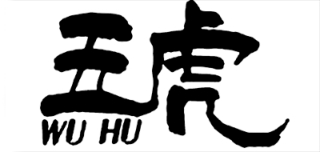 屯绿在茶叶行业中的票数:184
屯绿在茶叶行业中的票数:184
【屯绿是哪个国家的品牌?】
外推网助力屯绿品牌出海!通过在本页面挂载屯绿品牌的产品链接和联系方式,可以提高屯绿产品曝光!跨境电商爆单神器,目前只要100元/年哦~
屯溪绿茶简称“屯绿”,现主要是指安徽省黄山市(原徽州地区)辖区内所生产的炒青绿茶。
屯溪古镇地处皖、浙、赣边陲要冲,位于新安江畔,为现黄山市市政府所在地。屯溪本身产茶并不多,那为何冠以屯溪名的绿茶十分出名?据史料记载,主要是因以前皖南山区所生产的绿茶多集中在屯溪精制外销所致。
屯绿以其“叶绿、汤清、香醇、味厚”四绝蜚声海外。其中色、香、味、形俱臻上乘的极品特珍特级,条索紧细秀长,芽峰显露,稍弯如眉,色泽绿润起霜,香气鲜嫩馥郁,带熟板栗香,滋味鲜浓爽口,汤色黄绿明亮,叶底肥嫩匀亮。产量只占屯绿的千分之五,极其珍贵。当你一杯在手,就会香飘四座。品尝后,有“入口浓醇,过喉鲜爽,口留余香,回味甘甜”之感。
屯绿的主产地黄山市是我国古老茶区之一,早在唐朝以前已产茶。目前屯绿产区主要是休宁、歙县的东南乡、黟县的南乡、绩溪县的东北乡和祁门县的东乡,以及屯溪区,另有绩溪、旌德、宁国、宣城等地也有生产。屯绿品质的形成与名家名种密切相关。其中以祁门县的凫溪口、下土坑、杨村、李坑口(小范围以杨树林、杨村、骑马洲、下土坑为代表)出产的绿毛茶品质好,誉称“祁门四大名家”。所制炒青,条索壮实,色泽绿润,香高味浓、耐泡,素有“头泡香、二泡浓、三泡不减味、四泡味也醇”之赞誉。另外,与祁门名家相近的休宁“四大名家”——茗洲、古林、小阜、梓坞所产之茶也很出名。长期以来,黄山人民也培育出一批适制绿茶的优良品种,如休宁茗洲种、牛皮种,祁门骑马洲种、杨树林种、槠叶种、歙县黄山大叶种等。其中槠叶种和黄山大叶种(黄山种)为全国推广的有性系良种。此外,歙县汤口、竦坑、大谷运、汪满田等地以及深渡至街口之间所产的茶也是精制屯绿之上品。
屯绿茶的采制工艺也是十分独特的,屯绿的采制工艺起源于休宁的松萝茶。屯绿过去是手工制作,初制工艺分为杀青、揉捻和干燥三道。精制要经过恰、筛、扇、簸、拣等,再补火匀堆方为成品茶。新中国成立后,国家组织了专门力量进行试验推广初制机械,并于1950年9月在屯溪建立了精制厂。此后,歙县、休宁、黟县也相继建立了精制厂,开始以大规模全程机械化生产取代了手工操作。机械精制的主要工序是:筛分、切断、风选、炒车、拣剔、复火、匀堆。
屯溪的茶叶经营始于明而盛于清,开始以内销为主,俗谓“北达燕京、南及广粤”。
屯绿外销地区。嘉庆25年(1820年)后,开始销英国和美洲。清两江总督在屯溪置皖南茶厘局时,珍眉、针眉销北非、英国和美洲,珠茶销欧洲,熙春主销俄国。1930年前后,贡熙销苏联,珍眉销欧洲,风眉、蛾眉等花色销美国。目前主销摩洛哥、阿尔及利亚、毛里塔尼亚、利比亚等国家,营销活动共涉及五大洲近80个国家和地区。
屯绿花色品种主要有:特珍、珍眉、雨茶、特贡、贡熙、针眉、秀眉、绿片8个花色18个不同级别的外销绿茶。
英文翻译:Tunxi green tea is referred to as "Tun green", now it mainly refers to the fried green tea produced in Huangshan City, Anhui Province (the former Huizhou area). Tunxi ancient town is located in the border of Anhui, Zhejiang and Jiangxi. It is located on the Bank of Xin'an River and is the seat of Huangshan Municipal government. Tunxi itself does not produce much tea. Why is Tunxi famous for its green tea? According to historical records, it is mainly due to the fact that the green tea produced in the mountainous areas of Southern Anhui was mainly sold in Tunxi. Tunlu is famous for its four unique characteristics of "green leaves, clear soup, mellow flavor and thick taste". Among them, the color, fragrance, taste and shape are all of the best special grade, tight, delicate and long, the bud peak is exposed, slightly curved as eyebrow, the color is green, moist and frosting, the fragrance is fresh, tender and fragrant, with ripe chestnut fragrance, the taste is fresh, thick and refreshing, the soup color is yellow, green and bright, and the leaf base is tender, even and bright. The output only accounts for five thousandths of the green, which is extremely precious. When you have a cup in hand, it will be fragrant. After tasting, it has the feeling of "strong and mellow in the mouth, fresh and refreshing in the throat, fragrant in the mouth and sweet in the aftertaste". Huangshan City, the main producing area of tunlu, is one of the ancient tea areas in China. Tea was produced before Tang Dynasty. At present, Tuen green production areas are mainly Xiuning, Southeast township of she County, South Township of she County, northeast township of Jixi County and East Township of Qimen County, as well as Tunxi District. There are also production in Jixi, Jingde, Ningguo, Xuancheng and other places. The formation of green quality is closely related to famous families and species. Among them, Fuxikou, xiatukeng, Yangcun and likengkou (represented by yangshulin, Yangcun, qimazhou and xiatukeng in a small area) in Qimen County produce green tea with good quality, which is known as "four famous Qimen masters". The stir fry is strong and solid, green and moist in color, fragrant and strong in taste, and resistant to bubbles. It has been praised as "the first bubble is fragrant, the second bubble is thick, the third bubble does not reduce the flavor, and the fourth bubble is mellow". In addition, the tea produced by Mingzhou, Gulin, Xiaofu and Ziwu, the "four famous families" of Xiuning, which are close to Qimen, is also famous. For a long time, the people of Huangshan have also cultivated a number of excellent varieties suitable for green tea production, such as Mingzhou species in Xiuning, cowhide species, Qimen horse riding continent species, poplar forest species, Castanopsis leaf species, Shexian Huangshan big leaf species, etc. Among them, Castanopsis eyrei and Huangshan large leaf species (Huangshan species) are the improved sexual strains popularized in China. In addition, the tea produced in Tangkou, shengkeng, daguyun, wangmantian, etc. of Shexian county and between Shendu and JIEKOU is also the top grade of refined green cultivation. Tun green tea production process is also very unique. Tun green tea production process originated from Xiuning's Pineapple tea. Tunlu was made by hand in the past, and the primary production process is divided into three parts: green, rolling and drying. The refined tea should go through the proper, screening, fan, winnowing, picking, etc., and then make up the fire and pile up evenly before it is the finished tea. After the founding of the people's Republic of China, the state organized special forces to carry out experiments and popularize the primary machinery, and established a refining plant in Tunxi in September 1950. Since then, Shexian County, Xiuning County and Shexian county have established refining plants successively, and began to replace manual operation with large-scale full mechanized production. The main process of mechanical refining is: screening, cutting, air separation, stir frying, picking and picking, rekindling, and even stacking. Tunxi's tea business began in the Ming Dynasty and flourished in the Qing Dynasty. It began to be mainly sold domestically. It is commonly known as "Yanjing in the north, Guangyue in the South". Green export area. Jiaqing 25 years (1820), began to sell in the United Kingdom and America. When the governor of the two rivers of the Qing Dynasty set up the tea Bureau in Tunxi, Zhenmei and Zhenmei were sold to North Africa, Britain and America, pearl tea to Europe and Xichun tea to Russia. Around 1930, Gongxi sold to the Soviet Union, rare eyebrows sold to Europe, wind eyebrows, moth eyebrows and other colors sold to the United States. At present, it is mainly sold to Morocco, Algeria, Mauritania, Libya and other countries. The marketing activities involve nearly 80 countries and regions on five continents. There are 18 kinds of export green tea of different levels, including 8 kinds of designs and colors: special treasure, rare eyebrow, rain tea, tribute, Gongxi, needle eyebrow, Xiumei and green slice.
本文链接: https://www.waitui.com/brand/b53128efd.html 联系电话:请联系客服添加 联系邮箱:请联系客服添加

















 浙公网安备 33011802001999号
浙公网安备 33011802001999号
